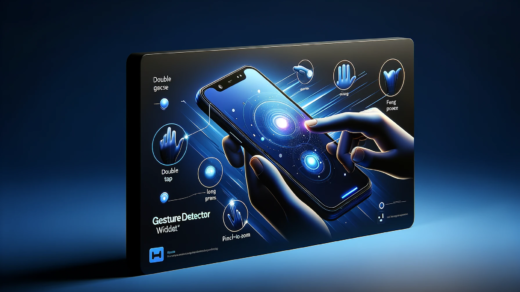Wearable technology has advanced by leaps and bounds in the last decade, revolutionizing the way we live, work, and play. Wearable gadgets, ranging from smartwatches to fitness trackers, have become an essential part of our everyday lives, allowing us to stay connected, check our health, and enhance our general well-being.
In this in-depth post, we’ll look at the growth of wearable technology, the numerous benefits it provides, and the exciting potential for the future of wearable devices.

1) The Evolution of Wearable Technology
1.1. Early Beginnings
The notion of wearable technology may be traced back to the 1960s, with devices such as Seiko’s 1969 “Wrist Computer,” a wrist-mounted calculator. Several breakthroughs have transformed the market since then, making wearable gadgets more advanced, useful, and accessible.
1.2. The Rise of Fitness Trackers and Smartwatches
With the emergence of fitness trackers and smartwatches in the early 2000s, the contemporary era of wearable technology began. Devices like the Nike+iPod system and Fitbit opened the way for a new generation of wearable technology by making it simple for users to measure their physical activity, establish fitness goals, and track their progress.
1.3. Integration with Smartphones and IoT
Wearable technology evolved to provide seamless integration with cell phones as they got more popular. Wearables began to integrate functionality such as alerts, GPS, and music control, transforming them into a must-have accessory for smartphone users. As the Internet of Things (IoT) evolved, this integration stretched even further, allowing wearables to link to a wide range of smart gadgets in our homes and workplaces.
2) The Advantages of Wearable Technology
2.1. Health and Fitness Monitoring
Fitness trackers and smartwatches, for example, have revolutionized the way we monitor and manage our health. Wearables give vital insights into our everyday activities, such as heart rate monitoring, sleep tracking, and step counting, allowing us to make educated decisions about our fitness routines and general well-being.
2.2. Enhanced Communication and Connectivity
Wearable technology enables consumers to stay connected and get real-time information without having to check their cell phones frequently. Smartwatches, for example, may show phone, text, and email alerts, allowing users to prioritize and reply to essential communications while on the go.
2.3. Safety and Emergency Features
Some wearable gadgets have safety and emergency capabilities like fall detection and SOS functionality, which can be especially useful for older users or those with medical issues. These features can help assure rapid assistance in the event of an emergency, giving the wearer and their loved ones peace of mind.
3) The Future of Wearable Technology
3.1. Augmented Reality (AR) and Virtual Reality (VR)
Wearable devices will play a significant role in the broad acceptance of AR and VR technologies as they evolve. Smart glasses, for example, have the potential to completely transform sectors such as gaming, education, and healthcare by delivering immersive, interactive experiences that seamlessly integrate the digital and physical worlds.
3.2. Healthcare and Medical Applications
Wearable technology, with gadgets that can continually monitor vital signs, manage medication adherence, and even identify early indications of sickness, is set to have a huge influence on the healthcare business. Healthcare providers may utilize this data to deliver personalized treatment and enhance patient outcomes.
3.3. Advanced Materials and Power Solutions
The development of innovative materials and power solutions becomes critical as the demand for slimmer, more comfortable wearables develops. Flexible electronics, stretchy batteries, and energy-harvesting technologies will pave the way for wearable gadgets that are lighter, more durable, and use less energy.
3.4. Integration with Artificial Intelligence (AI)
The use of AI in wearable technology will allow devices to learn from the habits and preferences of users, resulting in personalized experiences and insights. Wearables powered by AI might analyze health data to deliver personalized workout suggestions, identify emotional states to boost mental well-being, and generate context-aware notifications.
3.5. Expanded Use Cases and Industries
As wearable technology advances, its uses will expand beyond health and fitness into a variety of industries such as fashion, transportation, and even agriculture. Wearables might be used to monitor employees’ safety in dangerous areas, assist visually impaired people with navigation, or even help farmers manage livestock health and productivity.
4) Tips for Choosing the Right Wearable Device
4.1. Identify Your Needs
Determine what exact features and functionalities you require before investing in a wearable gadget. For example, if you’re solely interested in fitness monitoring, a specialized fitness tracker may be more appropriate than a full-fledged wristwatch with functions you may never use.
4.2. Compatibility with Your Smartphone
Ascertain that the wearable gadget you select is compatible with your smartphone, as some features and capabilities may not work with specific phone models or operating systems.
4.3. Battery Life
When choosing a wearable device, battery life is an important element to consider, especially for users who want to wear the gadget throughout the day or during lengthy activities such as hiking or jogging.
4.4. Comfort and Design
Select a wearable gadget that is comfortable to wear on your wrist or body and complements your own style. A gadget that is overly heavy, large, or unappealing may wind up gathering dust in a drawer.
Conclusion
Wearable technology has gone a long way since its inception, providing a myriad of benefits that improve our daily life. With breakthroughs in AR/VR, healthcare, AI, and many other fields, the future of wearable devices appears quite promising as the industry continues to innovate and expand. You can choose the ideal wearable gadget to help you remain connected, improve your health, and improve your overall quality of life by carefully analyzing your needs and preferences.
Read More
The Ultimate Guide to Smart Home Technology: Revolutionizing Modern Living
5G Networks: A Complete Introduction about 5G Networks
VR vs AR | What are Virtual Reality and Augmented Reality?
A Complete Details About Computing Power & Quantum Computing
The Rise of Artificial Intelligence in the Healthcare Industry































1 Response
[…] Wearable Technology: Revolutionizing the Future of Smart Devices […]